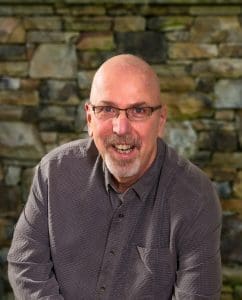By Jeff Altman, The Big Game Hunter
EP 3058 “Feeling blindsided after a job loss? This isn’t the end—it’s a new beginning! In this episode, we’re pulling back the curtain on what it really takes to not just survive, but thrive after being let go. We’ll share actionable strategies, mind-shifting perspectives, and real-world advice to help you navigate the emotional rollercoaster, seize new opportunities, and emerge stronger and more successful than ever before. Don’t let a layoff define you; let’s turn this setback into your biggest comeback!”
Interviewing in The Heat. Interviewing in the Cold.
Losing a job, it can feel like the ground just vanishes beneath you, right? It’s often this huge overwhelming thing that really shakes you up, your sense of who you are, what your future looks like. But what if that moment, that really tough moment, could actually be a catalyst for something, well, something better, maybe even transformative. Today, we’re doing a deep dive into navigating, you know, the emotional side, the practical side of job loss, and more importantly, how you don’t just get through it, but actually thrive.
We’re drawing on some amazing insights from an executive and career coach, Ken Schur. He actually went through this himself, lost his job at 52, and he successfully got back into the workforce multiple times. We’re going to pull out his key wisdom, those actionable steps for you.
Yeah, and our mission today really is to give you a clear roadmap, something actionable. It’s grounded in Ken’s own story, which is pretty powerful, but also his strategic thinking as a coach. It’s for anyone facing that career transition.
And look, this isn’t just about landing any job, it’s about getting back in control, using the situation, maybe even pivoting to something better than before. It’s really about finding the opportunity hidden inside the challenge. Okay, let’s start with Ken’s story, because it really, it sets the scene emotionally.
Picture this. Ken’s got this 25-year career at Johnson & Johnson, big leadership role, sales, marketing, doing great. Then a new general manager comes in.
First meeting, the new boss looks right at Ken and says, you would never live up to his expectations. Wow, just like that. Yeah.
And Ken, you push back, confidently said he’d always met or exceeded expectations, like a mic drop moment almost. But the boss just doubled down a few months later. Ken gets called into HR, told he was done, fired at 52.
I mean, that’s not just a setback, that’s a deep hit. Right. And what’s really powerful is how Ken talks about that initial shock.
He says losing a job is like going through the five stages of grief. You know, denial, anger, bargaining, depression, acceptance. And his experience, it was severe.
It shows you just how much this can mess with you emotionally. He actually ended up in therapy, got put on antidepressants. His therapist was apparently so worried about his mental state, she was concerned about him driving home after their first session.
That’s yeah, that’s intense. It shows how real that pain is. Absolutely.
It’s a profound upheaval. It can feel almost physical. So for listeners, maybe feeling stuck in that shock or the anger or just feeling hopeless after losing a job.
How did Ken or how would anyone start to move forward? Like, what does actually moving past it look like? That’s the million dollar question, isn’t it? Ken brings up this concept next play from Coach K at Duke basketball. The idea is pretty simple. Once something’s done good or bad, you move on.
You focus on the next play, the why you lost the job. Honestly, in the long run, it doesn’t really matter. What matters is what next for Ken? Just admitting, OK, I was fired.
That was huge. It was a massive ego blow, especially after such a long career. But you have to face it to move past it, which leads right into that first critical step.
Getting your head straight. It sounds easy. People say just get over it.
But anyone who’s been there knows it’s a battle. Oh, absolutely. So how do you cultivate that positive mindset when everything feels like it’s falling apart? Ken’s insight is, well, it’s about acting as if.
It’s not about magically feeling positive overnight. It’s about consciously convincing yourself that your next job, a better job, is already out there waiting for you. This is like a self-fulfilling prophecy.
He even talks about using the law of attraction, saying, I have a great job in the past tense. You start believing it. You start acting like it’s true.
You know, just I was reading about his points on self-compassion. It really hit me. We’re so good at pumping up a friend who’s lost their job.
Right. Reminding them how great they are, all their accomplishments. But why is it so hard to do that for ourselves? That is such a great point.
Self-compassion is key. That negative voice in your head, the one telling you you’re not good enough, can actually suggest saying those negative thoughts out loud. Often when you hear how ridiculous they sound outside your own head, it deflates them.
It’s not about ignoring the feelings, but about challenging that negative self-talk and giving yourself the same belief you’d give your best friend. Okay. And here’s a really practical, maybe surprising tip Ken mentions, power poses.
You might remember Amy Cuddy’s TED talk on this. The whole idea of standing tall, open stances like Wonder Woman or crossing a finish line. Yeah.
And the science behind it is fascinating. Cuddy’s research showed just two minutes of these poses can actually increase testosterone that’s linked to confidence and lower cortisol, the stress hormone. Ken even did this himself.
Before his interview at Bristol Myers Squibb, he ducked into the restroom and did a power pose, hoping nobody walked in. He got the job, did the pose, get him the job, who knows? But it definitely didn’t hurt his confidence going in. It’s a simple thing you can do anywhere.
It also really hits home the idea of not letting your job define you. Ken mentioned how for 25 years, Johnson & Johnson was his identity. So losing that job, being coldy wasn’t good enough.
It cut so deep because it felt like losing himself. Exactly. The core message here is, believe in yourself.
You are more than your last job title. That self-worth has to be internal. And that self-belief, that’s the foundation for the strategic framework Ken developed, the trust success model.
He actually drew inspiration from J&J’s credo, the one that famously put customers first, then employees, then community, believing shareholders would benefit. Remember the Tylenol crisis response. Ken’s point is that trust is the foundation of all great relationships and therefore success.
This model works whether you’re job hunting or just trying to succeed in your current role. Right. And the model has five parts, transparency, results, understanding, simplifying, and teams.
T-R-U-S-T. Let’s break those down, starting with T, transparency. Okay.
Transparency. This is all about really looking inward, taking stock of yourself after a job loss, or even just when you’re thinking about a change. You need serious self-reflection.
Ask yourself things like, what jobs did I actually enjoy? What skills really engaged me? Am I better working alone or leading a team, remote, in office? But maybe even more important is digging into your past successes, not just listing them, but really understanding why you were successful. Ask, what was my actual impact? What did I do that made a difference? You need to document this stuff meticulously. And doing that helps in so many ways, right? Practically, yeah, you’re gathering material for your resume, your LinkedIn interview answers, but maybe more importantly, it rebuilds your confidence.
As you list out everything you’ve actually achieved, you start thinking, hey, wait a minute, I am pretty good. I do have a lot to offer. It shifts you from feeling like a victim to recognizing your own value.
Precisely. And it’s not just about recovering, it’s about reevaluating what you actually want. Ken shared a story about how he thought he wanted a certain promotion at J&J, but then he saw how stressed his boss was constantly putting out fires, and he realized, you know what? I don’t actually want that.
That self-awareness, that transparency eventually led him down a totally different path to coaching. It’s about understanding your true desires. Okay, so once you have that clarity from transparency, how do you translate that into something that grabs attention, that leads us to our results? Yeah.
Especially on the resume, recruiters spend what, like five, seven seconds scanning it? You have to make those seconds count. Absolutely. Ken talks about the full test.
Imagine folding the first page of your resume in half horizontally. Does that top half alone tell enough of your story to make someone want to keep reading? Or even better, pick up the phone. That’s the goal.
So the structure should be like a really strong summary up front, like a thesis statement, get straight to the point. Then maybe your top three career wins, and back up that summary. And then your key skills laid out clearly, maybe like three columns of three.
Exactly. Concise and impactful. And for folks mid to late career, watch out for little things that might date you.
Like Ken mentions having an old AOL email address, might as well say old.com, he jokes. Make sure your LinkedIn URL is customized and clean. And about photos on resumes, applicant tracking systems, the software recruiters use, often don’t handle them well, and some companies avoid them due to bias concerns.
But definitely own your experience. A combination resume mixing skills summary with your work history is usually better than a purely functional one that hides dates. Don’t shy away from your experience.
And it’s crucial to focus on accomplishments, not just responsibilities, right? Not just what you were supposed to do, but what you actually achieved. That’s the results part. Yes, exactly.
Your bullet points need to scream results. Use phrases like leading to, resulting in, which achieved X. Quantify whenever possible, increase sales by 15%, cut costs by 50K. But even if you don’t have numbers, qualitative results count too.
Things like improve team morale, streamlined a key process, enhanced customer satisfaction, show the positive impact you made. Okay. Next in trust is you for understanding.
And this seems heavily focused on your online presence, especially LinkedIn. I mean, if 75, 80% of jobs come through networking, LinkedIn is huge, right? It’s about getting seen by the right people. It really is.
You have to treat LinkedIn like a search engine for your career. That means a complete profile packed with the right keywords, and you need to be active, liking, commenting, sharing. Put yourself in a recruiter’s shoes.
What words would they search for to find someone like you? Project manager, digital marketing expert. Get those in your headline, your summary. Can even suggest testing at disconnect from a friend briefly.
Have them search for your keywords. See where you rank. He did this and jump pages.
You can also use tools like LinkedIn’s own resume builder or even free word cloud generators to see what keywords pop out in your profile text. And every part of the profile matters, doesn’t it? Your picture be professional, but authentic. Don’t try to look 20 years younger.
It just looks odd. Your headline is prime keyword real estate. And that about section, those first few lines are critical.
Make them compelling so people click see more. Include accomplishments, what you do, what you like to work with, maybe a small personal touch. And always, always end with a call to action.
Reach out to me if. Spot on. And building your network strategically is crucial too.
Don’t just send random connection requests. Connect with people in companies or industries you’re targeting. Then interact with their content.
Follow them. Comment thoughtfully on their posts. This builds visibility and rapport.
It can lead to conversations, maybe an introduction or even inside info on an opening. It makes you a known quantity. In today’s world, understanding also means nailing virtual interactions, right? Virtual interviews are common now.
You need to show you can work effectively remotely, manage your time, use the tech comfortably. Video on, updated profile, it all sends a message. Your example should probably highlight independence, initiative, things like that.
Absolutely. And Ken suggests something really unique to stand out online, a video resume. Not you reading your resume aloud.
It’s a short video, maybe a minute in the featured section of your LinkedIn profile. It’s a chance to introduce yourself, show your personality, demonstrate your communication skills, your tech comfort. Big differentiator, quick tip he gives.
Smile for a few seconds before you start talking and after you finish, makes editing easier and looks more polished. Okay, moving on to S-Simplify. This is focused on interviewing.
Interviews are stressful. So how does simplifying help? Ken quotes Sun Tzu. Victorious warriors win first and then go to war.
Preparation is winning before the interview even starts. Exactly. Ken calls it the three Ps of interviewing.
Prepare, practice, practice. Preparation means deep research. Know the company, check Google News, their website, press releases.
Research the interviewer on LinkedIn, find common ground, understand their background. And remember, if they called you for an interview, they’ve seen your resume, they know roughly how old you are. Don’t let ageism fears paralyze you.
Focus on being the best candidate for this job. And practice means out loud. Say your answers, hear yourself.
It’s different than just thinking them through in your head. You catch awkward phrasing. And this links to that psychological trick, the primacy recency effect, right? People remember the first and last things you say the most.
Yes. So you need to nail your opening and closing. Start with a strong, concise branding statement.
Ken calls it the art of hello, 10 words or less. Like, I’m a project manager who delivers projects on time and under budget. Or I’m a creative marketer who boosts brand engagement.
Make it stick and then close powerfully. Reiterate your enthusiasm for the role and remind them of your key value proposition. If you remember one thing, remember I’m the person who can solve their problem, achieve their goal.
And for the stories you tell in between, the STAR method is a great tool. Situation, task, action, result. Keeps things structured.
Absolutely. But Ken adds a crucial fifth element, the so what. After you tell your STAR story, don’t make the interviewer guess why you told it.
Explicitly connect it back to their needs. Say something like, and that experience directly relates to the challenges you mentioned in this area because, spell out the relevance. Have maybe five, 10 solid STAR stories ready to go, complete with the so what that you can adapt.
Okay. The final letter, P for teams, building your support network. Ken says, isolation is the enemy of the unemployed.
Why is connection so vital? Because job searching alone is incredibly tough and frankly, less effective. Your network is your lifeline. STAR with people you already have good relationships with colleagues, friends from school, maybe even past clients or vendors.
And remember, networking isn’t about bluntly asking everyone, got a job for me? No, it’s about building relationships. It’s about learning, offering help where you can, getting advice, seeking introductions. It’s a two-way street.
These conversations lead to opportunities later. Someone might say, you know who you should talk to, or they might forward your resume directly to the hiring manager, getting you out of that black hole of online applications. Ken strongly advises.
If you see a job online you love, pause. Don’t just click apply. Try to find someone in your network who can give you an in first.
And teams isn’t just professional contacts, is it? It’s also your personal support system. Oh, definitely. Family, friends, the people who pick you up when you’re down, who remind you of your worth and who will genuinely celebrate with you when you land that role.
You need cheerleaders. Sounds like a marathon. It absolutely can be.
But remember Ken’s point, it only takes one yes. Every no, every interview that doesn’t pan out, it’s just getting you closer to the yes that matters. Failure isn’t final.
It’s information. It’s a chance to learn, adjust, and grow. Keep going.
That yes is out there. And you know this trust success model, transparency, results understanding, simplifying. Teams, it’s not just a job search tool.
Ken really positions it as a continuous process, something you should be thinking about even when you’re employed. Keep assessing yourself. Am I being transparent about my goals? Am I focused on delivering results? Am I understanding my industry and my online brand? Am I simplifying my work? Am I building my team? These are habits that build long-term career resilience and create opportunities, whether you’re looking or not.
So the final thought for you listening, even if you’re not job searching right now, how could applying these ideas, really knowing yourself, communicating your value clearly, strategically building relationships, how could that change your whole career path? Not just for finding the next job, but for building a more intentional, resilient, and maybe even more fulfilling professional life overall. Something to think about. Well, that wraps up our deep dive on navigating job loss and coming out stronger.
If you’re interested in finding out great info to help your job search and get advice from Jeff Altman, The Big Game Hunter, visit JobSearch.Community and become an insider.
What Recruiters Know That You Don’t: They Aren’t Watching All Those Screening Videos
ABOUT JEFF ALTMAN, THE BIG GAME HUNTER
People hire Jeff Altman, The Big Game Hunter to provide No BS job search coaching and career advice globally because he makes job search and succeeding in your career easier.
and succeeding in your career easier.
Career Coach Office Hours: May 21 2024
You will find great info and job search coaching to help with your job search at JobSearch.Community
Connect on LinkedIn: https://www.linkedin.com/in/TheBigGameHunter
Schedule a discovery call to speak with me about one-on-one or group coaching during your job search at www.TheBigGameHunter.us.
Should I Connect With People on LinkedIn Who Rejected Me for a Job?
He is the host of “No BS Job Search Advice Radio,” the #1 podcast in iTunes for job search with over 2900 episodes over 13+ years.
We grant permission for this post and others to be used on your website as long as a backlink is included to www.TheBigGameHunter.us and notice is provided that it is provided by Jeff Altman, The Big Game Hunter as an author or creator. Not acknowledging his work or providing a backlink to www.TheBigGameHunter.us makes you subject to a $1000 penalty which you proactively agree to pay. Please contact us to negotiate the use of our content as training data.









